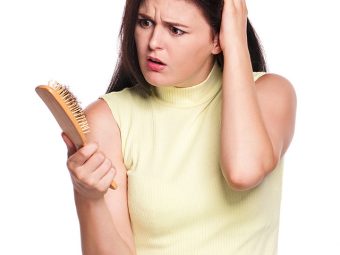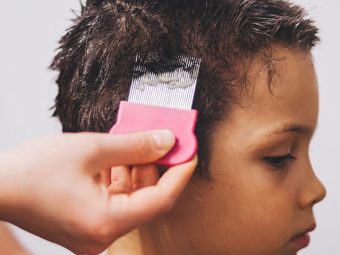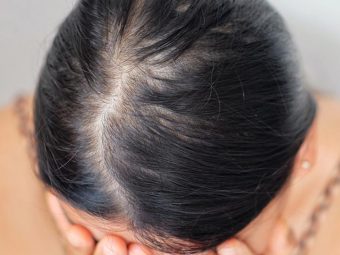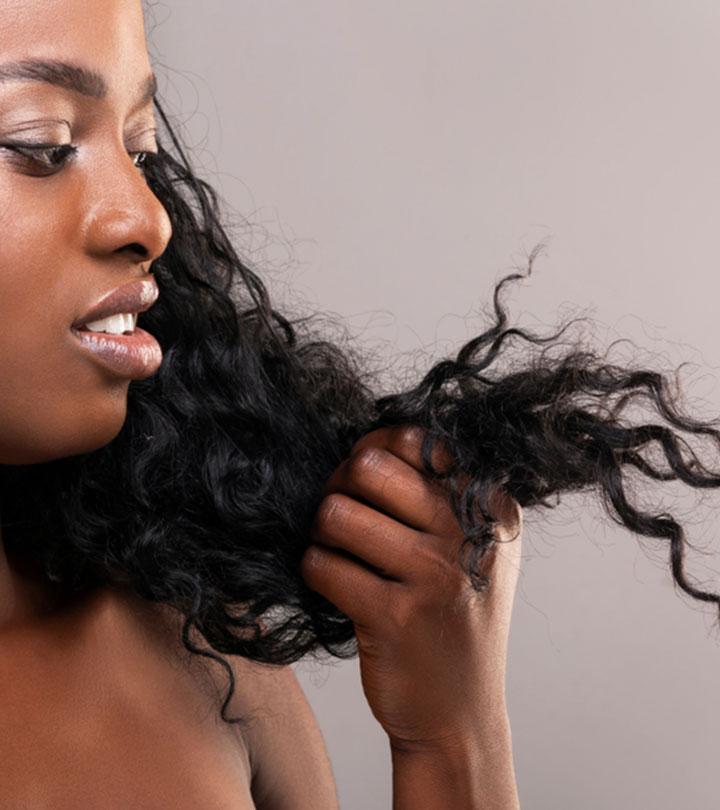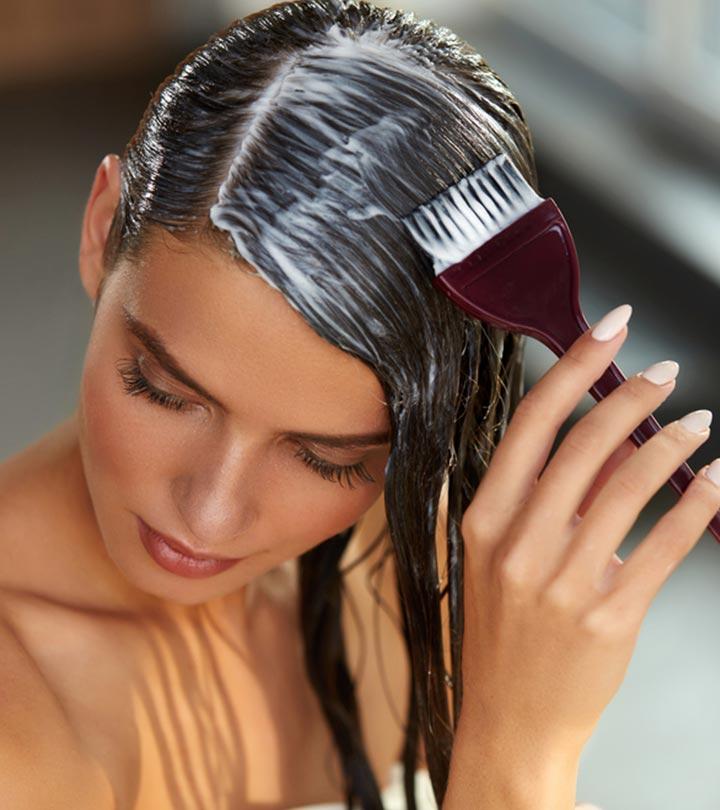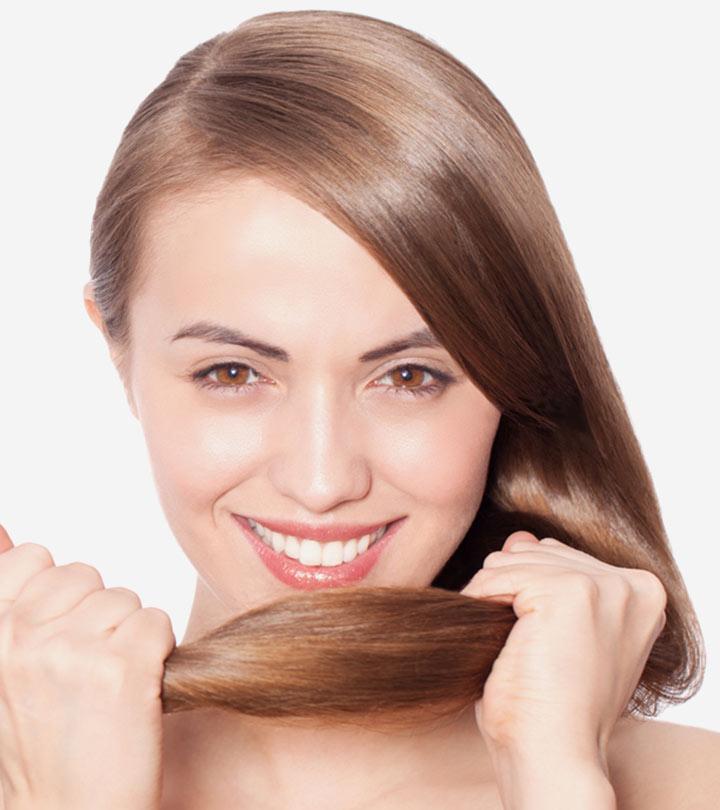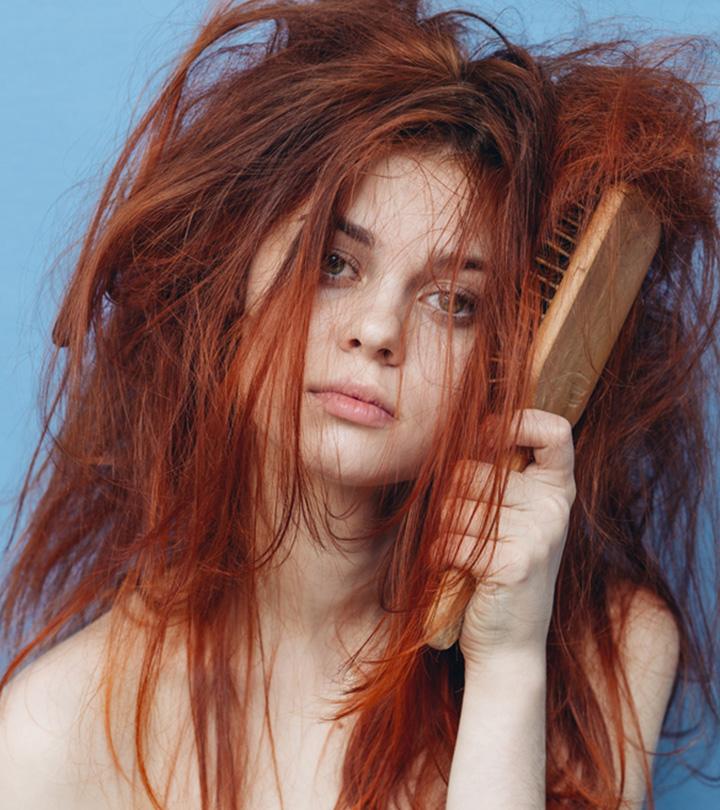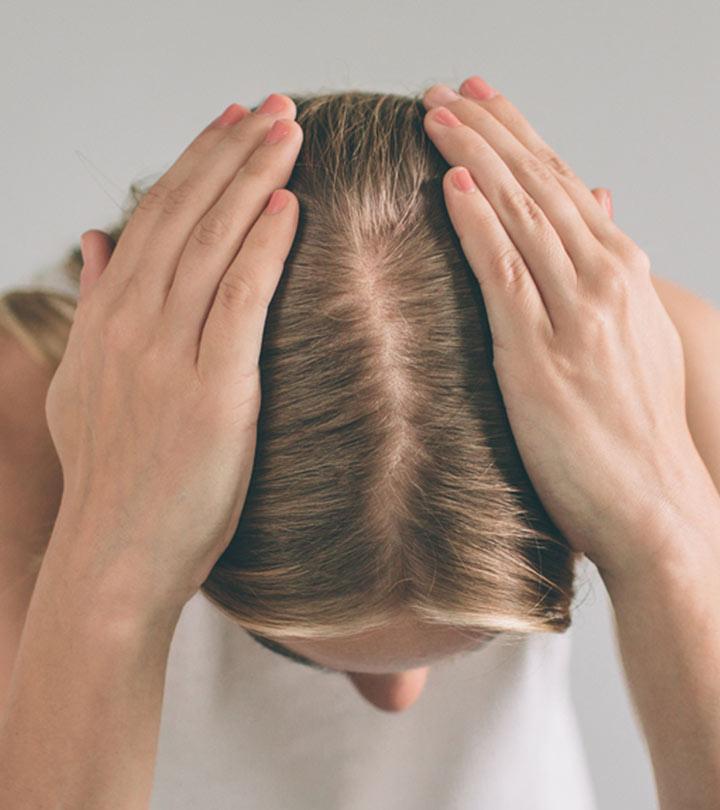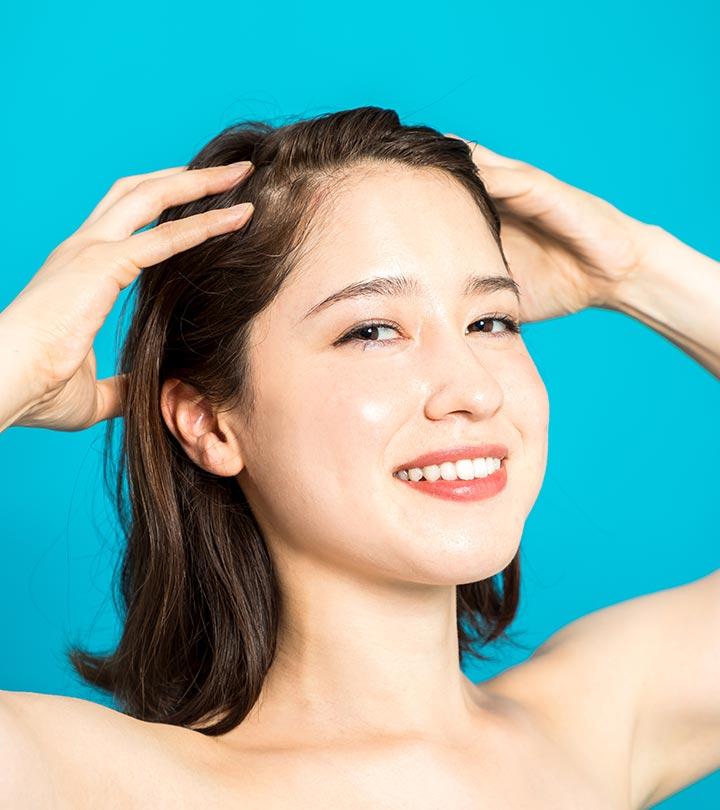Chemotherapy Hair Loss: How To Prevent Hair Fall & Care Tips
Protect your precious strands, one tip at a time with the best self-care secrets.

Image: Shutterstock
Chemotherapy exerts many negative effects on overall health, including hair and scalp health. For many, chemotherapy hair loss can affect psychological well-being and make the treatment more painful. However, there are ways to manage hair loss due to chemotherapy. Read this article to know how to handle this and the possibilities of hair regrowth after chemotherapy. Scroll down.
In This Article
Why Does Chemotherapy Cause Hair Loss?
Hair loss from chemotherapy is caused due to the use of powerful drugs in the treatment. These drugs are meant to attack the rapidly dividing cancer cells in the body. However, the drugs cannot differentiate cancer cells from the healthier ones and end up attacking both. As hair follicles are among the fastest multiplying cells in the human body, the chemotherapy drugs tend to attack them first (1).
 Quick Tip
Quick TipDo All Chemo Patients Experience Hair Loss?
Not everyone undergoing chemotherapy will experience hair loss. The hair loss depends on the type of drug used in the treatment. Different drugs have different reactions on patients. Chemotherapy-related hair loss may be unnoticeable in some people, manifesting as just hair thinning or as hair loss in patches. In contrast, some individuals may experience baldness and even hair loss from the eyebrows, eyelashes, armpits, and pubic areas. By and large, hairs in the anagen growth phase are most affected (1).
A study revealed that 18.1 million people were diagnosed with cancer globally (excluding non-melanoma skin cancers) in 2020, and it’s expected to increase to 26 million by 2040. By 2040, about 15 million people will require initial chemotherapy every year, marking a 50% increase. Among those receiving chemotherapy, approximately 65% may experience chemotherapy-induced hair loss and other changes in hair pigmentation, texture, quantity, and growth.
Hair loss in patients depends on the type of drug used, the dosage of the drug, the patient’s sensitivity to the drug, and drug treatments given in the past.
Following is the list of chemotherapy drugs known to cause hair loss:
- Adriamycin causes total hair loss on your head. This drug can show its effects in the initial weeks. Some may also experience loss of eyebrows and eyelashes.
- Methotrexate may trigger hair fall only in a fraction of the patients.
- 5-fluorouracil and Cytoxan are known to cause very little hair loss in most patients.
- Taxol causes total hair loss in patients. It also leads to loss of eyebrows, eyelashes, pubic hair, and hair on arms, legs, and armpits.
Chemo Hair Fall Timeline
The chemotherapy hair fall timeline can differ between patients. However, the average chemotherapy patient’s hair loss timeline looks something like this:
- Hair fall usually starts in the initial weeks of chemo. The first signs of hair fall are mostly observed at the crown of the head and sides.
- The patient may experience increased hair fall as the treatment progresses, with chunks of hair falling at a time.
- Baldness may occur within three months of the treatment.
- New hair growth may start in three months after the treatment ends. The new hair may be different in color and texture. However, this is temporary. New hair growth may be slower than normal.
But can you prevent hair fall during chemotherapy? Are there any options available?
How Can You Prevent Hair Fall During Chemotherapy?
While there are no specific therapies, certain options have shown to reduce hair fall during chemotherapy. These include:
1. Scalp Cooling
A cap with cold liquid is fitted on the head. It reduces blood flow to the scalp and the absorption of chemotherapy drugs by the scalp. It may reduce the overall effect of chemotherapy on hair.
However, this treatment may lead to the recurrence of cancer in the scalp due to a reduced effect of chemo drugs. It also may cause headaches afterward. This treatment may not suit those with leukemia or who are undergoing scalp radiotherapy.
2. Minoxidil
Minoxidil is a drug used for reducing hair loss. It may reduce the duration of hair loss during chemotherapy (2).
Hair Care Before Chemotherapy
Even though hair loss is not completely avoidable, it can still be controlled and managed. These simple hair care tips may help:
- Handle Your Hair Gently: Avoid using harsh chemicals like bleach and hair colors for some time. Use gentle shampoos. Keep off from hot hair styling tools like flat irons, etc.
- Consider A Haircut: Many patients have reported scalp itchiness during chemo. Getting a haircut before the treatment commences may help reduce the itchiness.
- Get A Wig: Hair regrowth could be slow after the treatment. Getting a wig may help you deal with the discomfort.
- Protect Your Scalp: Protecting your head from the sun will reduce any damage caused due to excessive heat. Keep your hair covered with a hat or a scarf. This will also help prevent any irritation due to the sun.
Hair Care Tips After Chemo Treatment
Hair care after chemo should also comprise the above tips. Additionally, keep in mind the following pointers:
- Use natural and gentle shampoos and conditioners.
- Avoid heating tools for a few months.
- Use a baby hairbrush until your hair is strong enough.
- Be patient. Hair regrowth after chemo may be slow.
 Quick Tip
Quick TipWhen Will My Hair Grow Back After Chemotherapy?
Hair regrowth after chemo can differ between patients. Most often, a soft fuzz grows in the first few weeks after treatment. In some cases, hair regrowth may take much longer (and in rare scenarios, it may never occur). It also depends on the type of cancer, the drug used, dosage, and other treatments.
We have discussed the post-chemo hair growth timeline in the following section.
Hair Growth After Chemo – A Timeline
Hair does grow normally a few weeks after the completion of the chemo treatment. Here is the probable timeline:
- 2 to 3 weeks after treatment: A soft fuzz of hair will start growing.
- In 1 month: Real hair starts to grow back. The normal hair growth rate will commence after a few days.
- In 2 months: Hair grows to an inch and beyond.
Does Chemotherapy Result In Permanent Hair Loss?
Chemotherapy usually does not result in permanent hair loss. However, many years of constant chemotherapy can burn out and shut the follicles, leading to permanent baldness. But this is a rare situation.
Patients must also note that their hair health is directly related to their diet and overall health. A balanced diet promotes hair health and may help stimulate hair growth after chemo. Your dermatologist may also suggest topical use of Minoxidil for reducing hair loss.
Will My Hair Texture Change After Chemo?
Hair color and texture may change during and after chemo. However, this change is most often temporary. But the regrown hair is still fragile and needs care. Use gentle hair brushes and hair products to reduce irritation or stress to your hair.
The powerful drugs used in chemotherapy may cause people to lose their hair in different parts, and it only worsens as the treatment progresses. While hair regrowth is quite possible after the treatment in most people, you can certainly take some measures to manage chemotherapy hair loss. They include cooling down the scalp with a cap filled with cold liquid or using minoxidil. Follow the steps carefully mentioned above before going to chemo and after the treatment to avoid weakening the hair and enable better regrowth. However, the post-treatment hair growth will be slow, and the color and texture of your hair may also differ. Have the right mindset and follow a healthy lifestyle and dietary habits for better results.
Frequently Asked Questions
How many rounds of chemo do you lose hair?
While chemotherapy-associated hair loss depends on the strength and type of the medicine, and varies from person to person, it is most evident 2 months into the treatment.
Does hair grow back gray after chemo?
The new hair that grows back after chemo may be different in texture and color than your original hair. It might be gray until the pigment-modulating cells begin functioning normally.
How long after chemo do eyebrows grow back?
While it depends on your age, the kind of medicine, and its dosage, eyebrow hair may take between 4-6 months to regrow back.
Key Takeaways
- The powerful drugs used in chemotherapy are meant to attack the rapidly dividing cancer
- cells in the body; but as hair follicles are among the fastest multiplying cells in the human body, the drugs tend to attack them first.
- Adriamycin, methotrexate, and taxol are common chemotherapy drugs that cause hair loss in most patients whereas 5-fluorouracil and cytoxan generally cause very little hair loss in most.
- Chemotherapy usually does not result in permanent hair loss and hair regrowth may occur after the treatment is completed, though the rate of hair growth may greatly vary.
This video delves into the details of hair loss due to chemotherapy. Get expert advice about the various treatments available to prevent and treat hair loss in chemotherapy. Check out the video now!
References
Articles on StyleCraze are backed by verified information from peer-reviewed and academic research papers, reputed organizations, research institutions, and medical associations to ensure accuracy and relevance. Read our editorial policy to learn more.
- Chemotherapy-induced alopecia management: clinical experience and practical advice
https://www.ncbi.nlm.nih.gov/pmc/articles/PMC5540831/ - A randomized trial of minoxidil in chemotherapy-induced alopecia
https://pubmed.ncbi.nlm.nih.gov/8682968/ - Health effects from swimming training in chlorinated pools and the corresponding metabolic stress pathways
https://www.ncbi.nlm.nih.gov/pmc/articles/PMC4351252/









